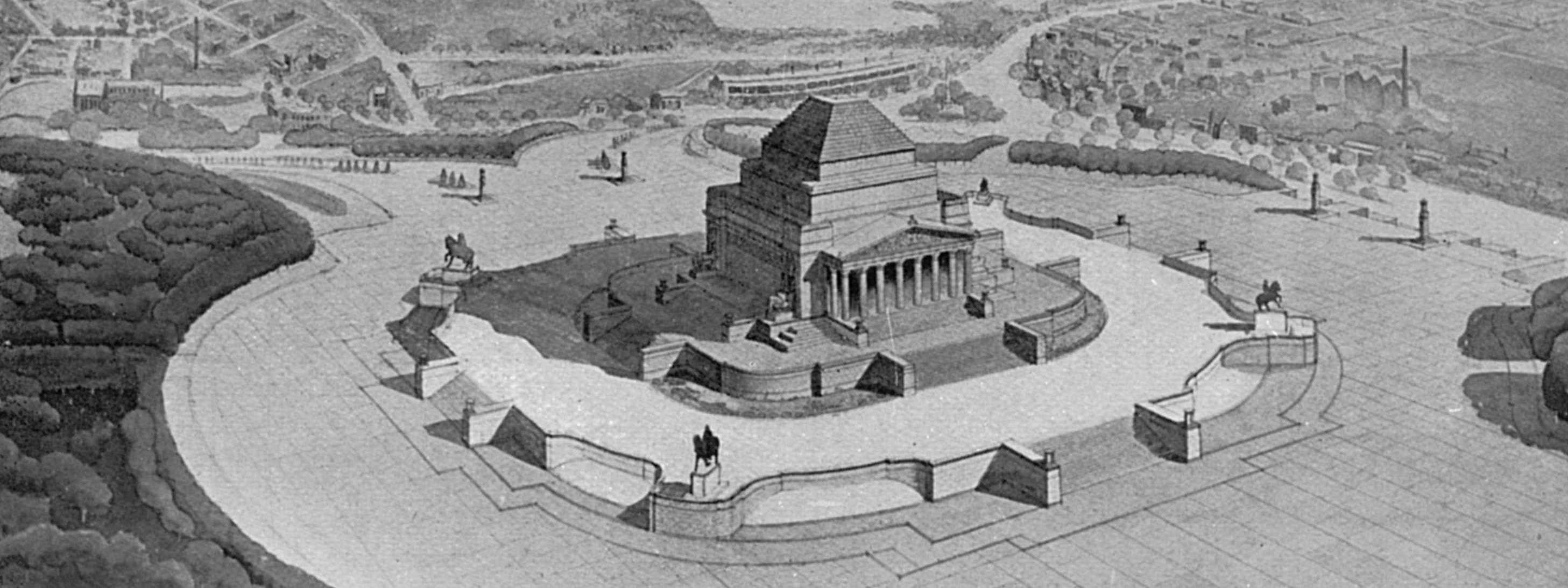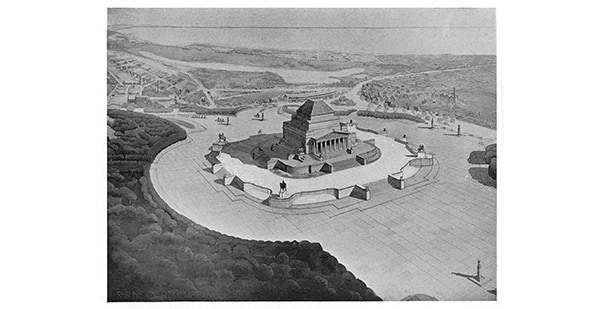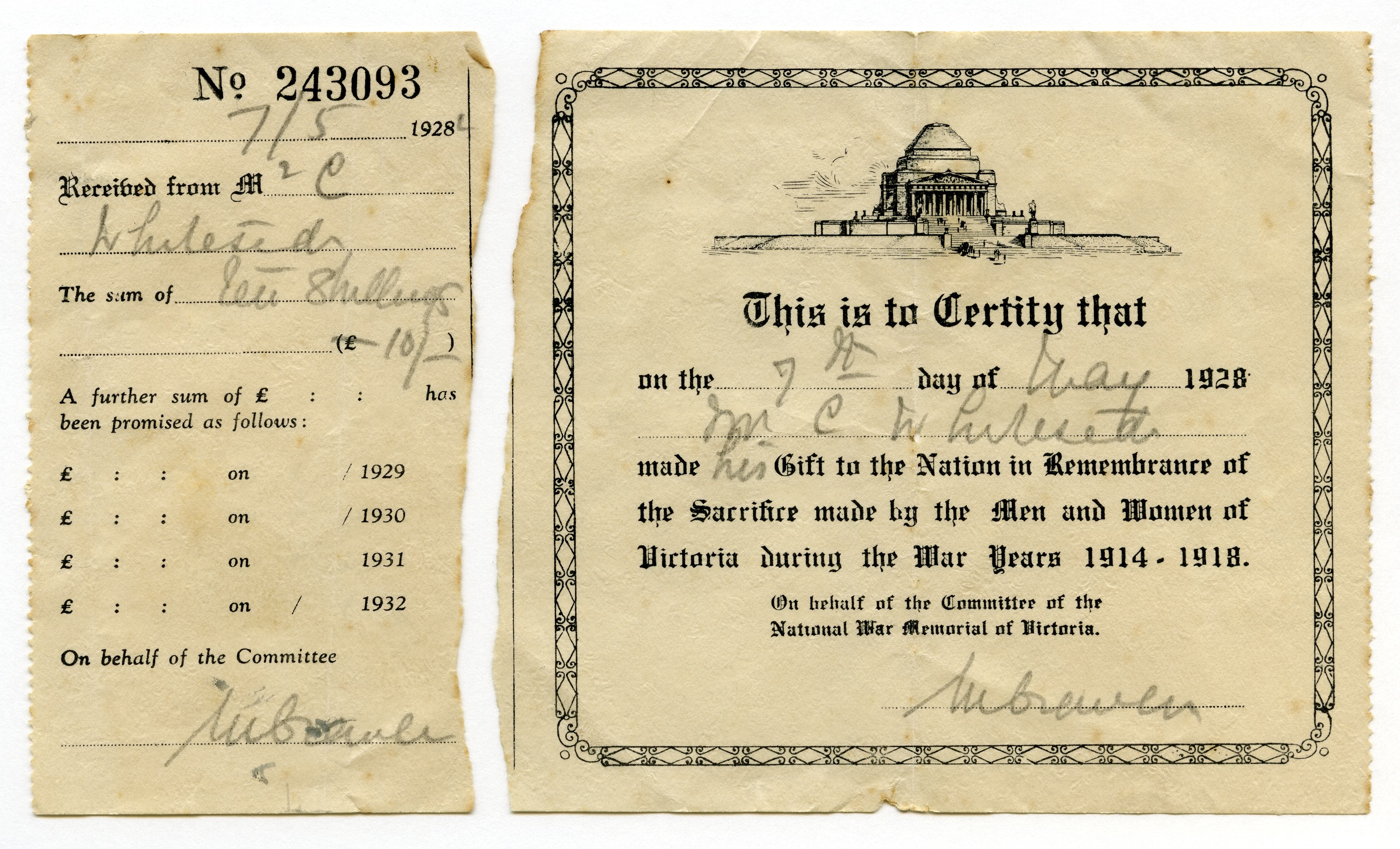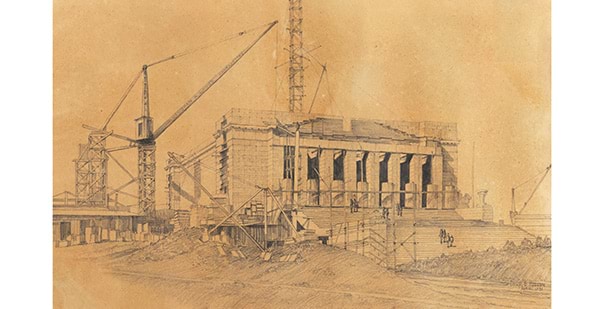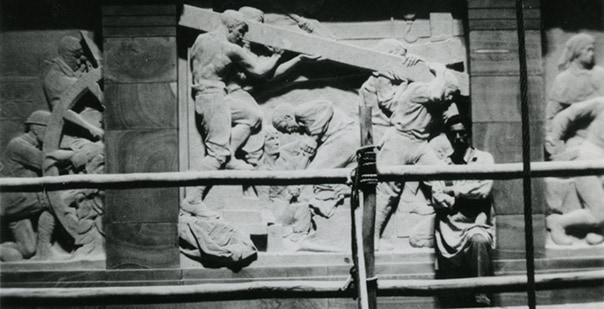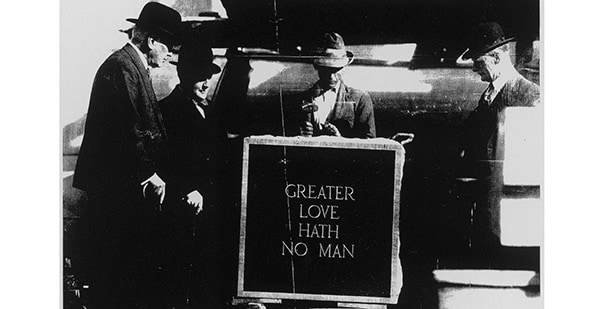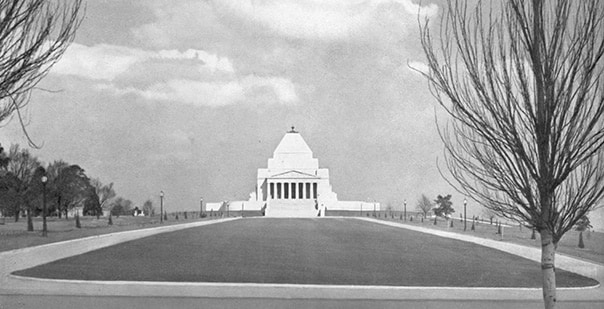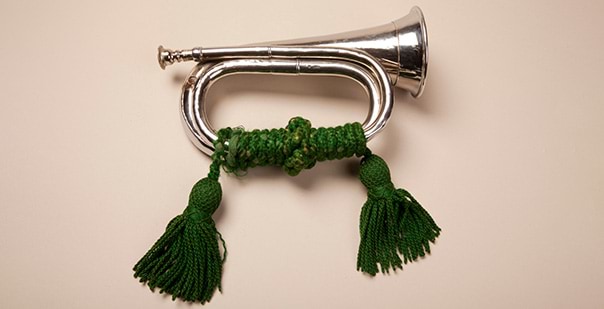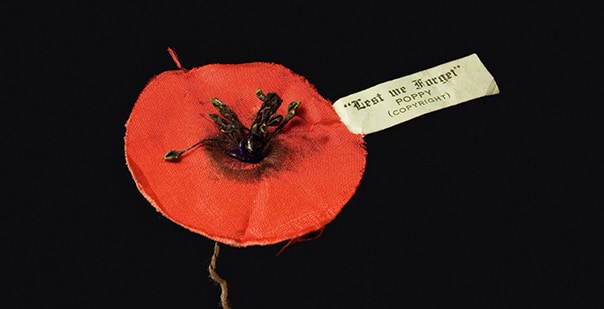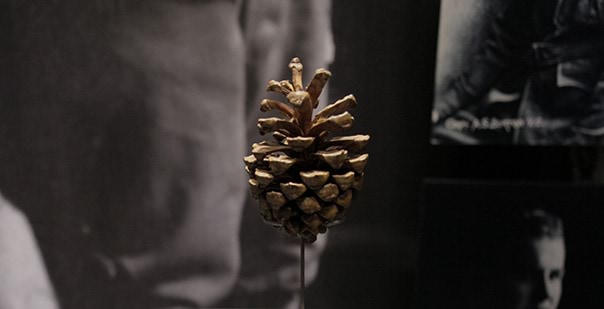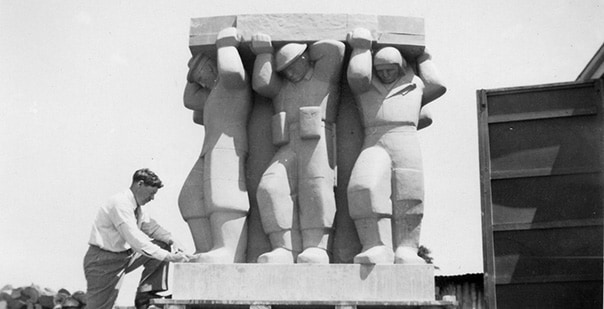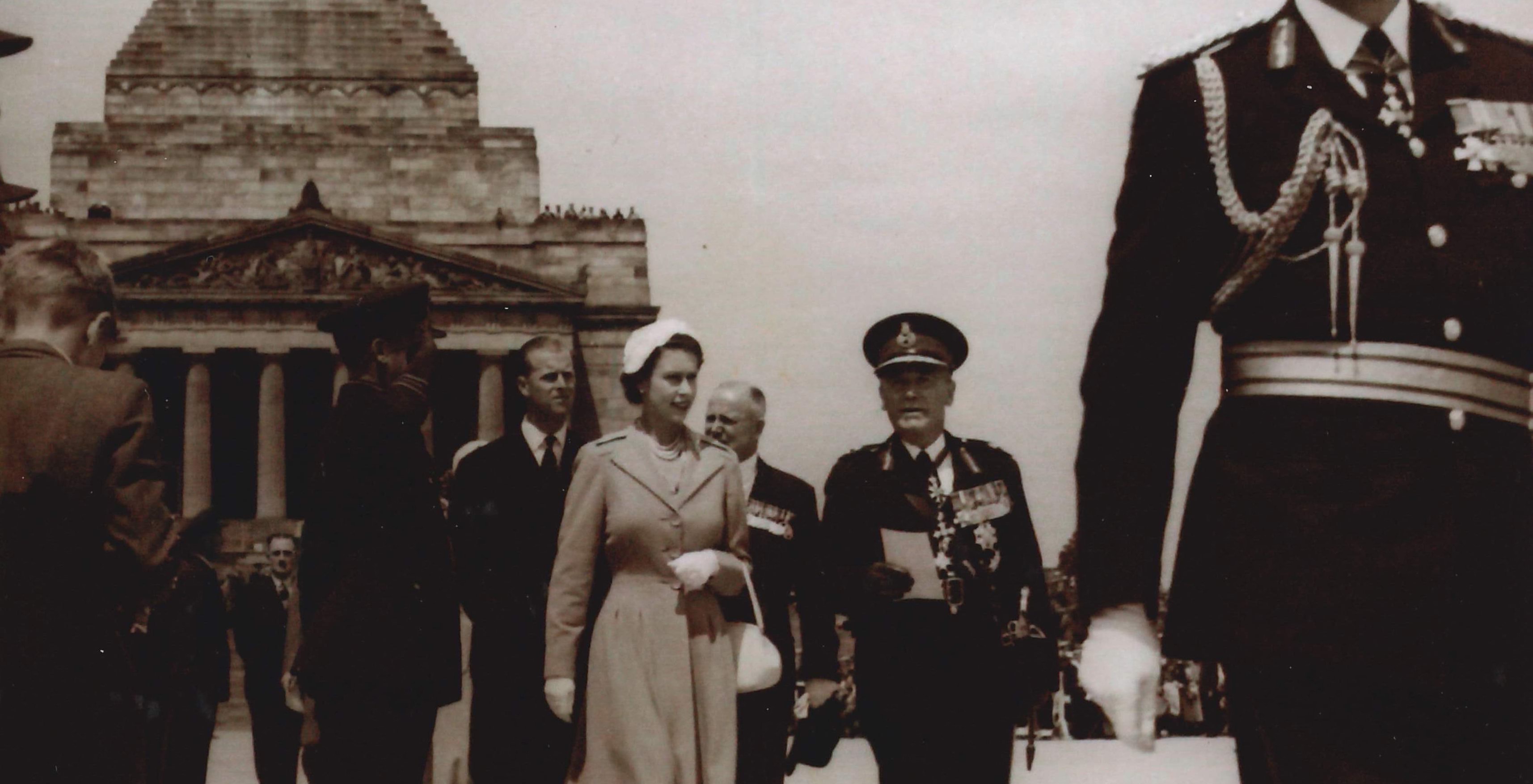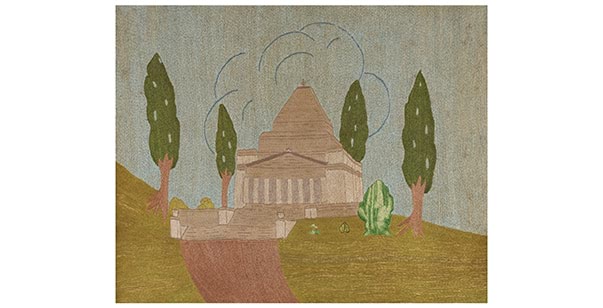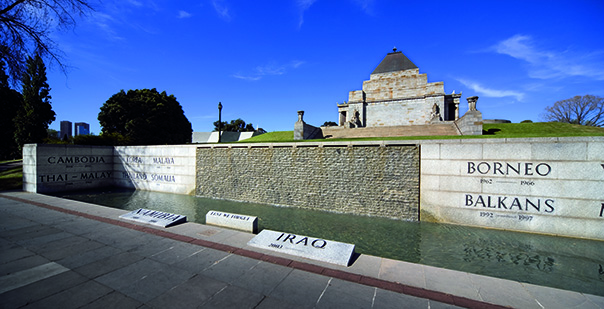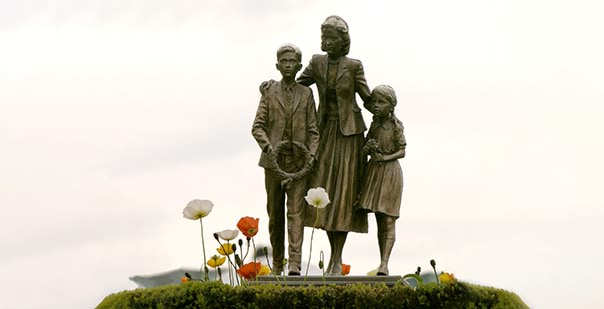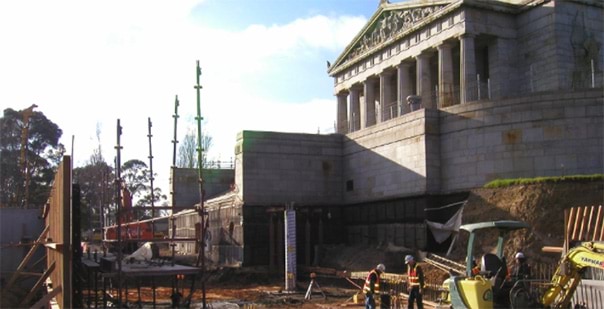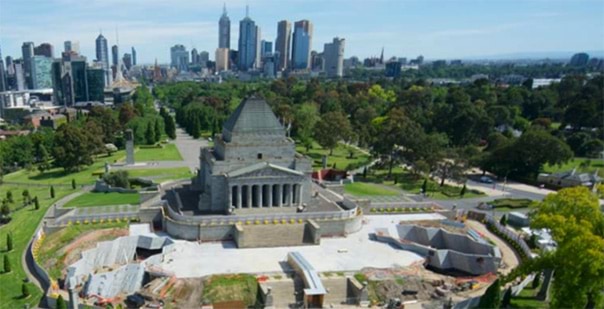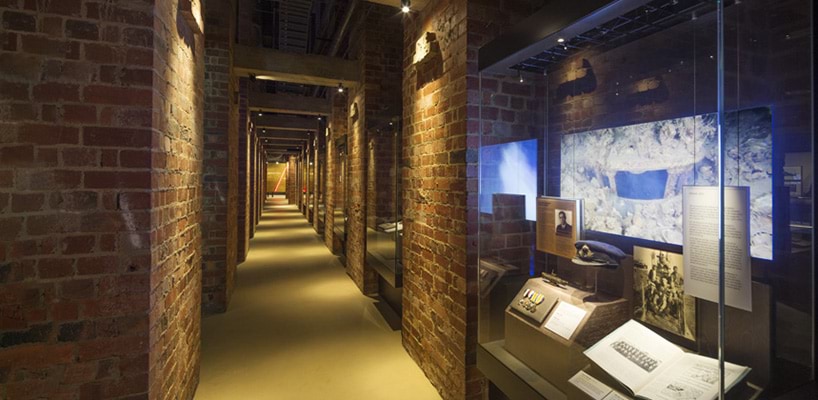The Shrine of Remembrance was built to provide a place to grieve and remember Victorians killed in the First World War (1914-18). It now provides a place of remembrance for Australian service and sacrifice in all wars since Australia’s Federation in 1901.
Of the 114,000 Victorians who enlisted in the First World War, 89,000 served abroad and 19,000 died. Many were buried in graves far from home.
The Shrine provided a place where families could remember loved ones. It also represented the courage of the men, women and children who remained at home and laboured in support of national defence in wartime.
The design for the Shrine was selected by competition among Australian artists and architects. 83 designs were submitted, and the winning design was by two Melbourne returned-soldier architects, Philip Hudson and James Wardrop.
The inspiration for the external outline came from one of the Seven Wonders of the Ancient World—the mausoleum at Halicarnassus to King Mausolus of Caria, in South West Asia Minor.
While Australia faced frightful unemployment and financial difficulty in the late 1920s and 1930s, so great was the gratitude of the people that the huge amount required to build the Shrine was raised within six months from the opening of the appeal in 1928.
Prince Henry, the Duke of Gloucester and son of King George V, officially opened the Shrine before a crowd of 300,000 people in November 1934. Since then, other memorials have been added to the site to mark the service of successive generations, such as the Second World War Memorial Forecourt and the post–1945 Memorial.
While direct experience and knowledge of the events of the First World War and later conflicts fade, interest in them is growing. Today the Shrine places a high priority on education and interpretation. Through commemoration, exhibitions and public programs, the Shrine continues to honour Victorian service and sacrifice and upholds and reinforces the values we associate with the original ANZACs.
Timeline
Official proposal to build an official memorial.
1918
The form the memorial would take was hotly debated. Some people believed it should take the form of something practical like a hospital or a bridge. Others thought it should be a commemorative monument such as an arch or cenotaph. General Sir John Monash, Deputy Chairman of the Victorian War Memorials Committee, supported the proposal for a permanent memorial.
Design competition
1922-23
An international competition determined the design of the Shrine of Remembrance. Australian artists and architects submitted 83 designs. Two Melbourne returned-soldier architects, Philip Hudson and James Wardrop created the winning design. Their design was inspired by the Mausoleum at Halicarnassus - one of the Seven Wonders of the Ancient World. The announcement of the winning design caused debate amongst the public which almost derailed the project.
Memorial Horse Trough
1926
A granite Memorial Horse Trough was unveiled on St Kilda Road. The trough, which honours the service of horses to Australian service, was later moved to its current position on Birdwood Avenue in 1987. It now forms part of the Gallipoli Memorial.
First sod turned
October 1927
The public controversy related to the winning design almost led to the project being abandoned. General John Monash is credited with ‘saving’ the development via his speech on Anzac Day eve 1927, supporting the winning design. The first sod was turned by the then Lord Mayor of Melbourne, Sir Stephen Morell on 24 October.
Foundation stone laid
November 1927
The foundation stone was laid by the Governor of Victoria, Lieutenant-Colonel, the Right Honourable Baron Somers, on 11 November.
Tenders for construction, first concrete poured
1928
Tenders for the construction of the Shrine of Remembrance went out. 7 submissions were received. Builders and stonemasons Vaughan and Lodge were appointed. The first concrete was poured, and the 7-year construction of the Shrine commenced.
Lone Pine tree planted
1933
A seedling from a pinecone brought from the Lone Pine battlefield on the Gallipoli Peninsula is was planted in the Shrine Reserve. The seed came from a pinecone brought back by Private Thomas McDowell, 23rd Battalion, Australian Imperial Force on his return to Melbourne after the First World War. Its descendant lives on today.
Opening ceremony
11 November 1934
Prince Henry, the Duke of Gloucester and son of King George V, officially opened the Shrine before a crowd of 300,000 people.
Shrine Guard appointed and 'Man with the Donkey' sculpture erected
1935
Twelve highly decorated veterans of the First World War are appointed as Shrine Guard to protect the Shrine and provide ceremonial support.
The small bronze sculpture 'Man with the Donkey' was erected. It was sculpted by Victorian-born William Wallace Anderson, a Gallipoli veteran. This sculpture makes up part of the Gallipoli memorial located near the Visitor Centre entrance.
Second World War Memorial Forecourt completed
1954
The Second World War Memorial Forecourt was completed. The Forecourt, which includes the Cenotaph and Eternal Flame was dedicated by Her Majesty Queen Elizabeth II. The flame, symbolising eternal life, was lit by Her Majesty during the dedication. The Cenotaph is a single pillar of stone rising 12.5 metres, topped with a carving made from Footscray basalt, designed by sculptor George Allen. The carving depicts 6 men in the uniforms of the 3 Australian services—the Navy, Army and Air Force, carrying a dead comrade draped in the Australian national flag.
Post-1945 Memorial
1985
The Shrine’s Remembrance Garden and Post-1945 memorial was opened by the Premier of Victoria, the Hon. John Cain. By this time Australia had participated in 4 conflicts since the end of the Second World War—Korea, Malaya, Borneo and Vietnam. The locations of further conflicts have been added since then.
'Drivers and Wipers' sculpture and Legacy Garden installed
1998
Casts of two sculptures entitled Wipers and The Driver by British sculptor Charles Sargeant Jagger, purchased by The Felton Bequest in 1937, and originally displayed on Swanston Street in front of the State Library, were transferred to the Shrine grounds. The Legacy Garden of Appreciation (formerly the Garden of Memory 1980-86) was dedicated and a sculpture Widow and Children by Louis Laumen was installed.
Stage 1 redevelopment
2003
Stage one of the Shrine’s redevelopment was completed. Designed by architects Ashton Raggatt McDougall (ARM), this work included the addition of the Shrine Visitor Centre, a new underground entry and the Visitor Centre courtyard
'Cobbers' sculpture installed
2008
A cast of the bronze sculpture 'Cobbers' by Peter Corlett, the memorial to Australian service and sacrifice at the Battle of Fromelles (19 July 1916). This sculpture was installed on the Shrine Reserve. The original cast of the sculpture had been placed in Fromelles itself in 1998.
Women's Garden and memorial cairn installed
2010
The Women's Garden was relocated from the King’s Domain to the Shrine Reserve. Designed by landscape architect Katherine Rekaris, both the garden and memorial cairn honour the women who served Australia from the Boer War through to 1985, when the women’s and men’s services were finally amalgamated.
Stage 2 redevelopment of the Shrine opens
2014
Stage two of the Shrine redevelopment by ARM opens. This work included the addition of the Galleries of Remembrance utilising the 1,600 square metres of undercroft space beneath the Shrine monument, the Terrace Courtyard and the Education Courtyard.
Updated
